Biquadratic.
Cartesian parametrization:
Cartesian equation of the projection on xOy:
Area of the portion of cylinder delimited by each component, for
| next curve | previous curve | 2D curves | 3D curves | surfaces | fractals | polyhedra |
BICYLINDRICAL CURVE
| Other name : Steinmetz curve. |
The bicylindrical curves are the intersections between two cylinders of revolution.
First case : two orthogonal cylinders with radii a
and b, and axis at distance 2c.
| System of Cartesian equations: Biquadratic. Cartesian parametrization: Cartesian equation of the projection on xOy: Area of the portion of cylinder delimited by each component, for |
Case a = b:
The curve is invariant under the two half-turns
that swap the two cylinders.
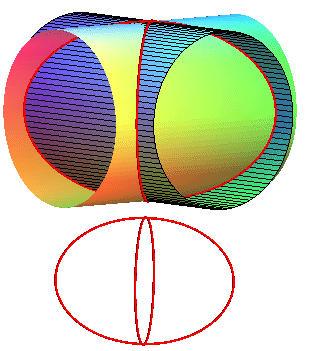 |
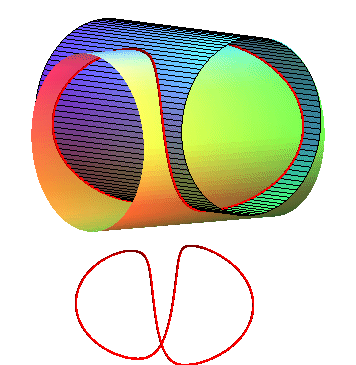
Small c. |
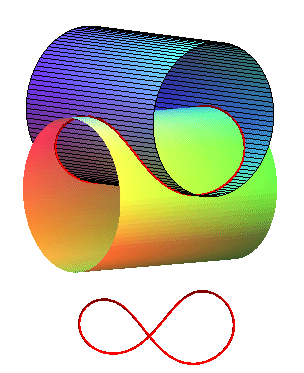
c = a /2 |
Case a < b:
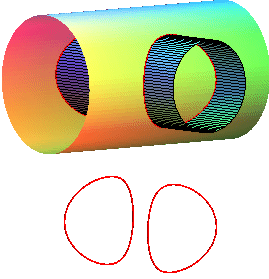
|
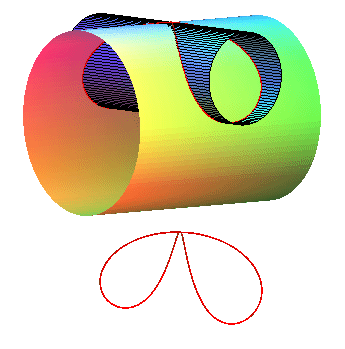 See the Alain curve. |
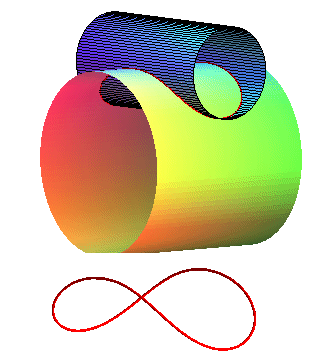 |
| One can notice that the bicylindrical curve is traced
on the ellipsoid By scaling, we can turn the ellipsoid into a sphere, while the two cylinders become elliptic cylinders. The intersection obtained is one of the possible seam lines of a tennis ball. |
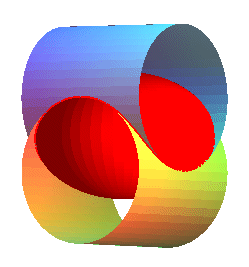 |
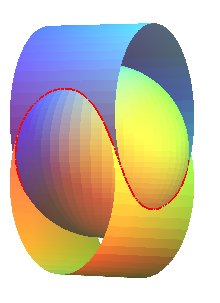 |
| Coiling the iso-energy curves of the pendulum leads to bicylindrical curves that are the intersection between cylinders with perpendicular axes. |  |
Second case : two cylinders with secant axes, one of radius
a,
the other of radius b, forming an angle
with the plane orthogonal to the first.
| System of Cartesian equations: Cartesian parametrization: Case a = b : |
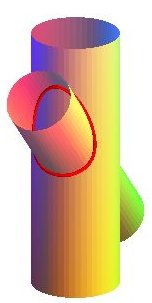 |
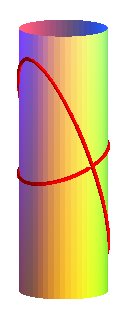 |
| The Swiss jeweler Philippe
Mingard uses bicylindrical curves for his creations (case a = b,
small c); he believes that this curve is "the manifestation of simplicity
and purity incarnate".
See also the case of the seam line of a tennis ball, or the pancake curve, other curves that are invariant under a half-turn. |
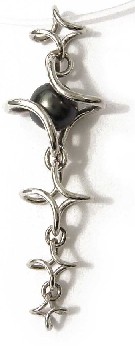 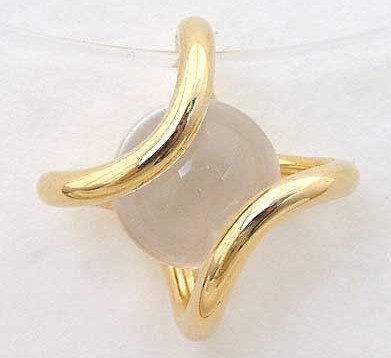 |
| The Ulysse
Lacoste rulpidon, a Steinmetz
solid pierced with two full cylinders, reveals 10 edges which are 5
bicylindrical curves
one of which is formed by two ellipses.
|
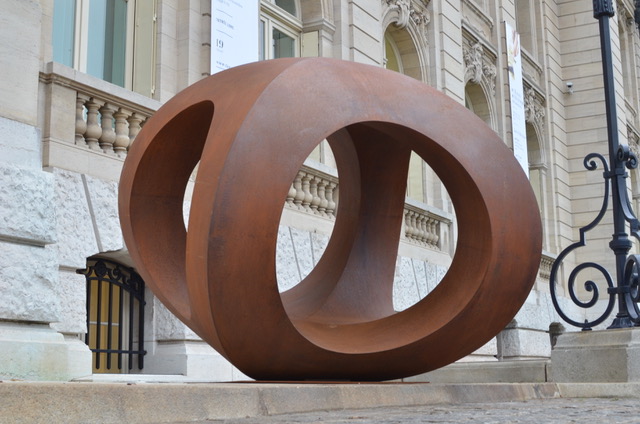 |
 |
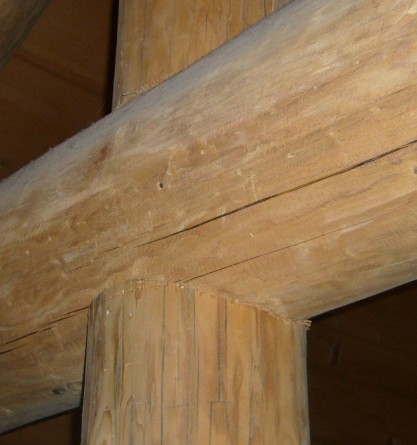
Beams of my chalet... |
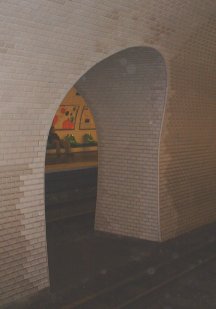
Botzaris station, in the Parisian Metro. |

Lights in my staircase |
Many other examples on the mathourist's page!
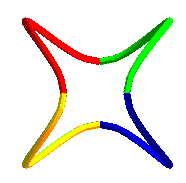
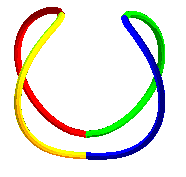
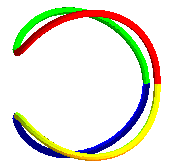
| next curve | previous curve | 2D curves | 3D curves | surfaces | fractals | polyhedra |
© Robert FERRÉOL 2022